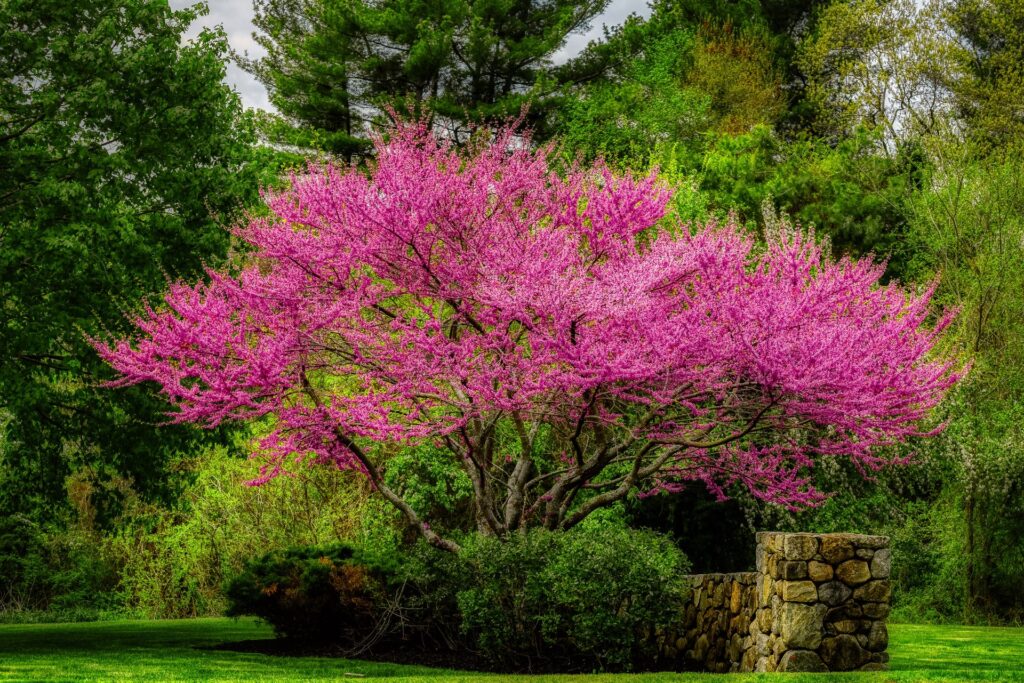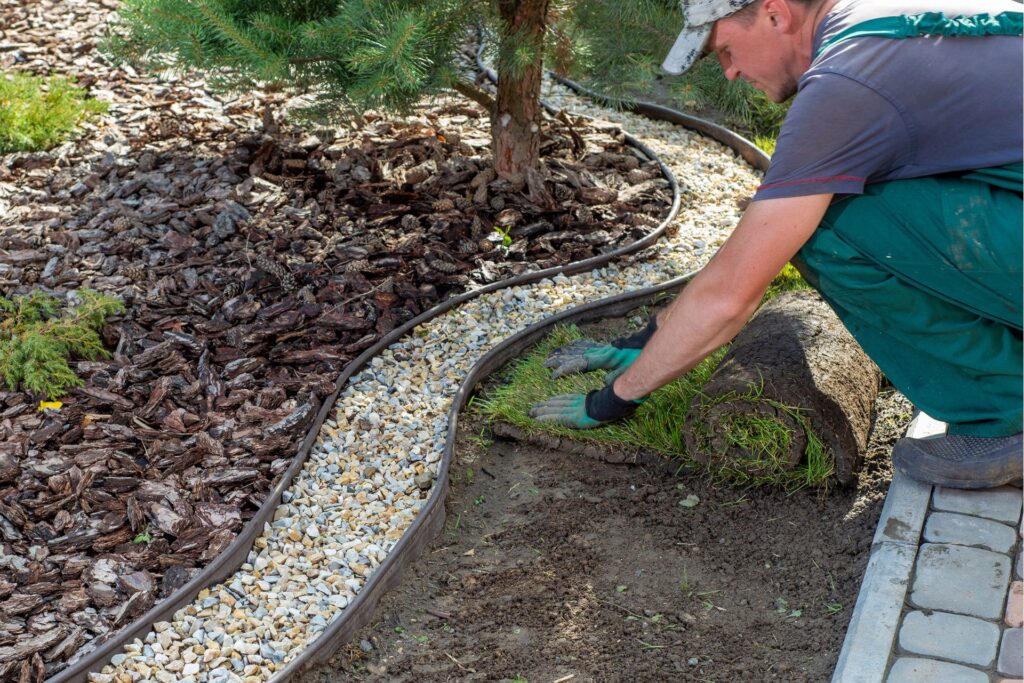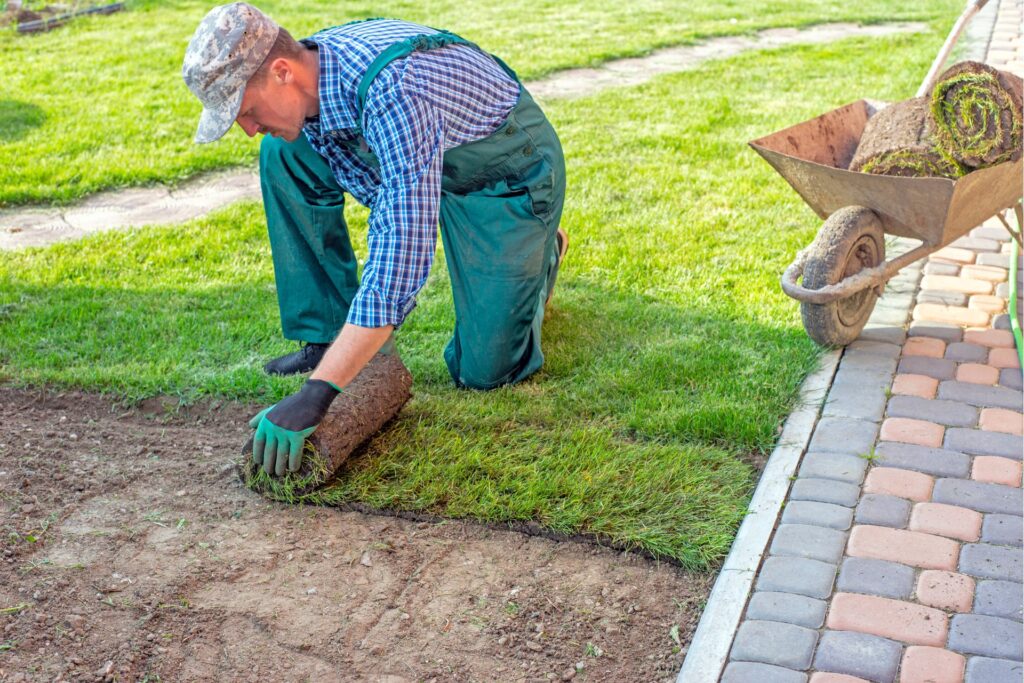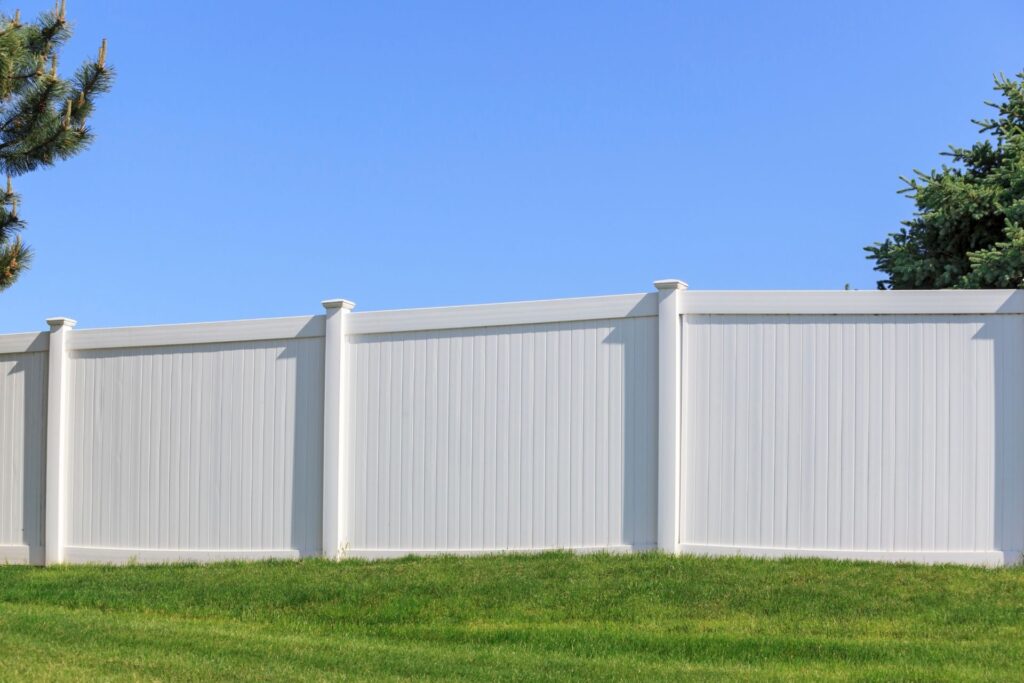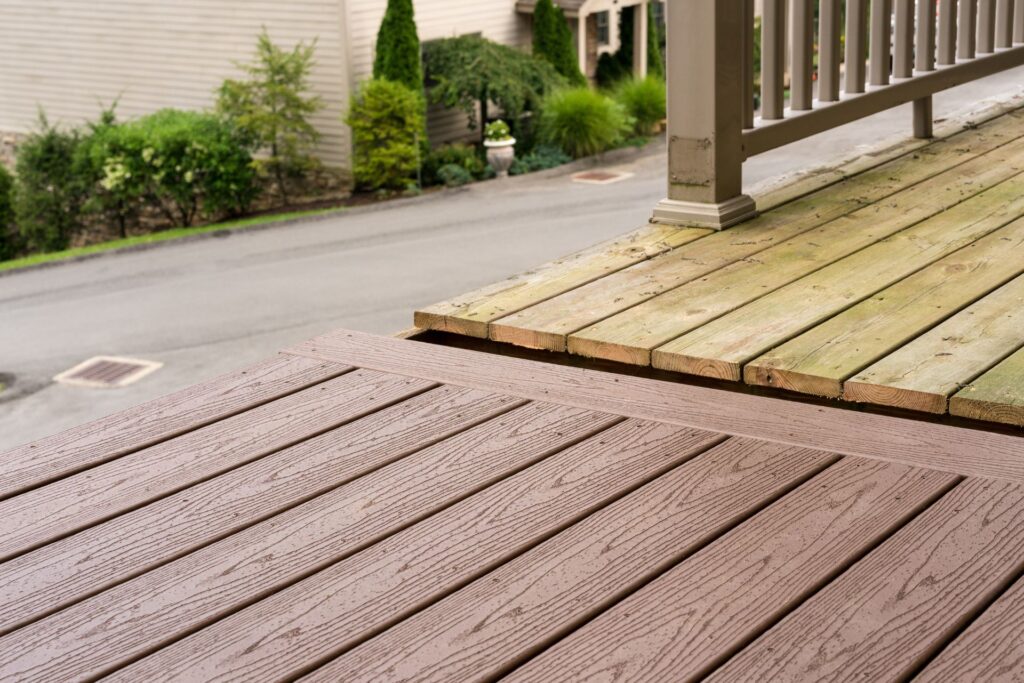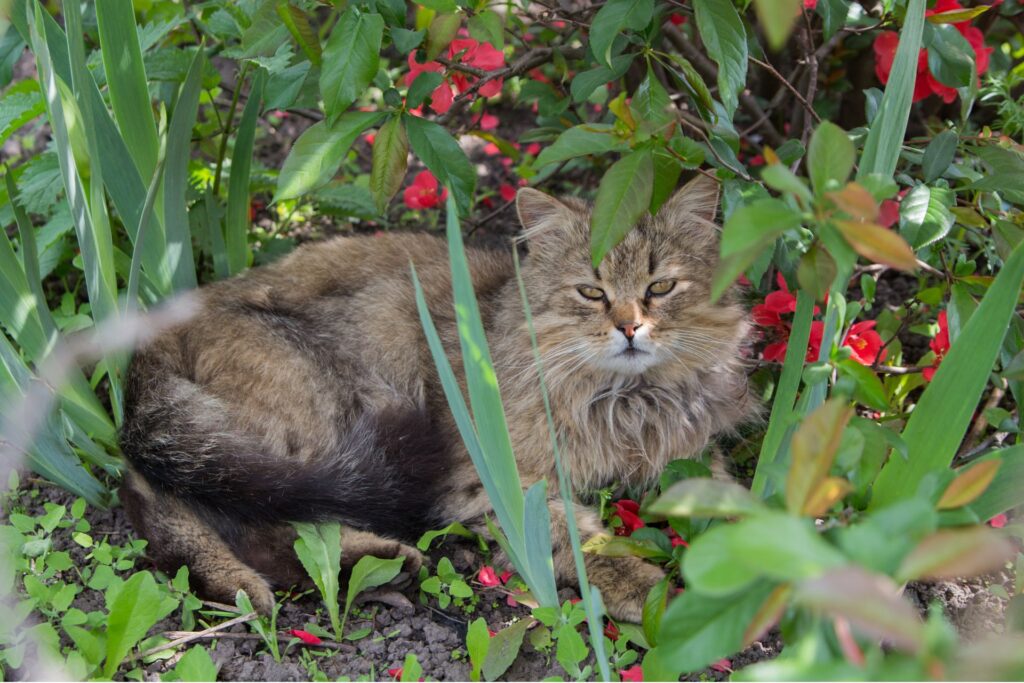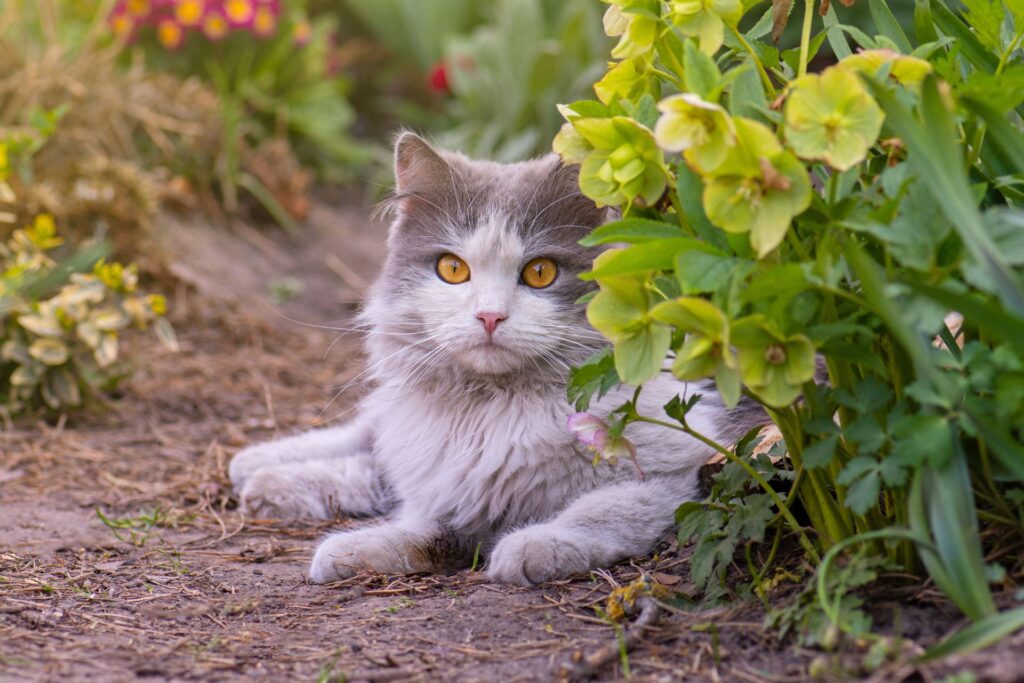Welcome to our guide on selecting the best trees for small gardens in New Zealand, a task that requires careful consideration due to limited space. Many homeowners face the challenge of finding trees that enhance their garden’s beauty and functionality without overwhelming the area. In this article, we will explore various trees suitable for compact spaces, taking into account factors like mature size, growth rate, root behavior, and maintenance needs. By the end of this guide, you’ll have a clearer understanding of how to pick trees that bring life and color to your garden while being perfectly scaled to fit smaller landscapes.
When selecting trees for small gardens in New Zealand, it’s crucial to consider species that fit well in limited spaces and thrive in local conditions. Ideal choices include the compact varieties of Pōhutukawa like ‘Maori Princess’, which offers lush, red blooms without overwhelming the garden. Kōwhai, with its stunning yellow flowers, attracts native birds and fits beautifully into small spaces. For those who appreciate autumn colors, the Japanese Maple in smaller cultivars provides vibrant foliage without becoming too large. Additionally, Crabapple trees not only stay compact but also add a splash of spring color with their beautiful blossoms. These species ensure that even the smallest gardens can enjoy the beauty and benefits of nature without the worry of overcrowding.
- Why Choose The Right Trees For Your Small Garden?
- Key Considerations Before Planting Trees In Small Gardens
- Top Trees For Small Gardens In New Zealand
- Planting And Caring For Your Trees
- Design Tips For Incorporating Trees Into Small Gardens
- Common Mistakes To Avoid
- FAQs: About Best Trees For Small Gardens In New Zealand
- Conclusion
Why Choose The Right Trees For Your Small Garden?
Selecting the ideal trees for your small garden is not just about beautifying the space, but it’s about making every square foot count. Trees in a small garden offer more than just aesthetic appeal; they bring a multitude of benefits and can transform your garden into a vibrant, cozy sanctuary. Let’s explore why choosing the right trees is essential for small gardens and how it can enhance the overall functionality and beauty of your outdoor space.
The Benefits of Having Trees in Small Gardens
1. Beauty: Trees are nature’s art, and their varied shapes, sizes, colors, and textures add visual interest and a dynamic element to a garden. From the delicate blossoms of a cherry tree in the spring to the fiery foliage of a small maple in the fall, trees are a celebration of seasonal changes.
2. Privacy: In urban and suburban settings, where houses are close together, a well-placed tree can be a natural privacy screen. Trees like holly or tall, narrow junipers can shield your garden from prying eyes, creating a secluded retreat.
3. Shade: Strategic placement of trees in the garden can help regulate temperature, reducing the heat of the midday sun and making the outdoor space more enjoyable. Smaller trees like dogwoods or larger shrubs that grow tall, like arborvitae, provide ample shade without taking up too much space.
Enhancing Your Garden with the Right Trees
Choosing the right trees for your small garden is crucial to avoid overwhelming the space and to ensure each tree can thrive without competing for resources. Here are some tips on how to select the right trees:
Consider the Scale: Opt for trees that match the scale of your garden. Dwarf or semi-dwarf varieties provide the beauty and function of their larger counterparts, without the risk of overcrowding.
Think Long-Term: Consider how big a tree will grow over time, not just its size when you plant it. This foresight will prevent issues related to overcrowding and maintenance down the line.
Choose Multi-Functional Trees: Some trees provide more than just one benefit. For example, a crabapple offers beautiful blossoms and fruit, and can also serve as a habitat for birds, enhancing biodiversity.
Look for Seasonal Interest: To maximize the visual impact of your garden throughout the year, select trees that offer different attractions across seasons—like those with notable spring flowers, interesting bark for winter, vibrant foliage in the fall, or evergreen leaves for year-round color.
Position Wisely: The placement of each tree should be considered to optimize light exposure, soil conditions, and the overall aesthetic of the garden. Proper positioning will ensure that each tree not only survives but thrives, contributing positively to the garden’s ecosystem.
By choosing the right trees, you not only enhance the beauty and privacy of your small garden but also contribute to a sustainable environment. Trees naturally clean the air, reduce runoff and carbon emissions, and support wildlife. A thoughtfully designed garden with the right selection of trees can provide a peaceful retreat and a proud statement of natural beauty in your home environment. Remember, every tree planted is a step towards a greener, healthier planet. So, choose wisely and plant with purpose.
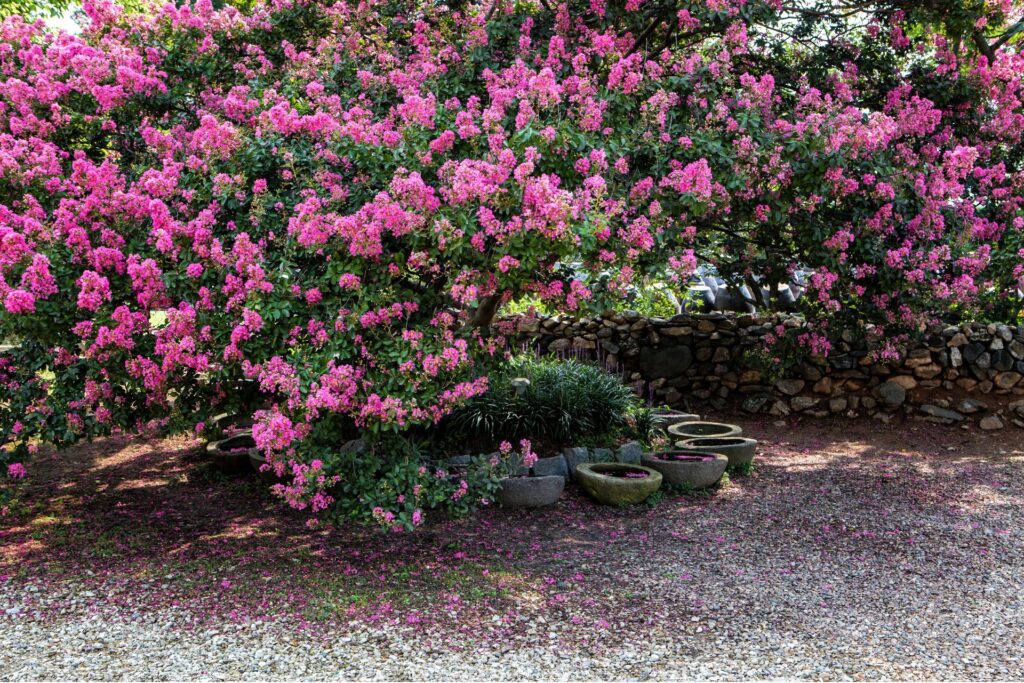
Key Considerations Before Planting Trees In Small Gardens
Planting a tree in a small garden can transform the space, providing shade, privacy, and beauty. However, the limited area means it’s crucial to make thoughtful choices about which trees to plant. Here are some key factors to consider to ensure that your small garden thrives and remains manageable.
Size and Scale
One of the first considerations when selecting a tree for a small garden is its mature size. It’s important to understand how large the tree will grow in terms of height and spread. A tree that fits well when young may become overpowering as it grows, potentially dominating the garden and even impacting your home or neighbor’s space. Research trees that are known to be proportionate to your available space. Dwarf varieties and those that naturally maintain a small stature, such as crabapple or Japanese maple, are excellent choices for smaller gardens.
Root System
The root system of a tree is a critical, yet often overlooked, factor in selecting the right tree for small spaces. Trees with aggressive root systems can damage foundations, walkways, and underground utilities. Instead, opt for trees with less invasive roots, such as boxwood, hawthorn, or cherry trees. These species are safer for planting near homes and garden structures, helping to prevent costly repairs down the line.
Maintenance Needs
Maintenance is another important aspect to consider. All trees require some level of care, but the amount can vary significantly between species. Some trees might need frequent pruning to maintain their shape and size, which can be a considerable effort in a small garden. Moreover, the watering needs can also differ; for instance, younger trees generally need more water until they are fully established, whereas mature trees are often more drought-tolerant. Selecting a tree with maintenance requirements that fit your lifestyle and gardening capabilities will ensure it remains healthy and manageable.
Seasonal Changes
Finally, consider how the changes through the seasons will affect your garden. Deciduous trees, which shed their leaves in the fall, can dramatically change the appearance and light conditions in your garden throughout the year. They can provide shade in the summer and allow more sunlight in winter, once the leaves have fallen. Evergreen trees, on the other hand, maintain their foliage all year round, offering constant shade and privacy. This choice affects not only garden aesthetics but also the amount of garden maintenance you will need to undertake in terms of leaf collection and managing light for other plants.
Choosing the right tree for a small garden involves careful consideration of the tree’s mature size, root system, maintenance needs, and how it will change with the seasons. By taking these factors into account, you can ensure that your tree will be a beautiful and manageable addition to your garden for many years to come.
This thoughtful approach not only enhances your enjoyment of the garden but also contributes positively to the local ecosystem, providing benefits for wildlife and improving the urban environment.
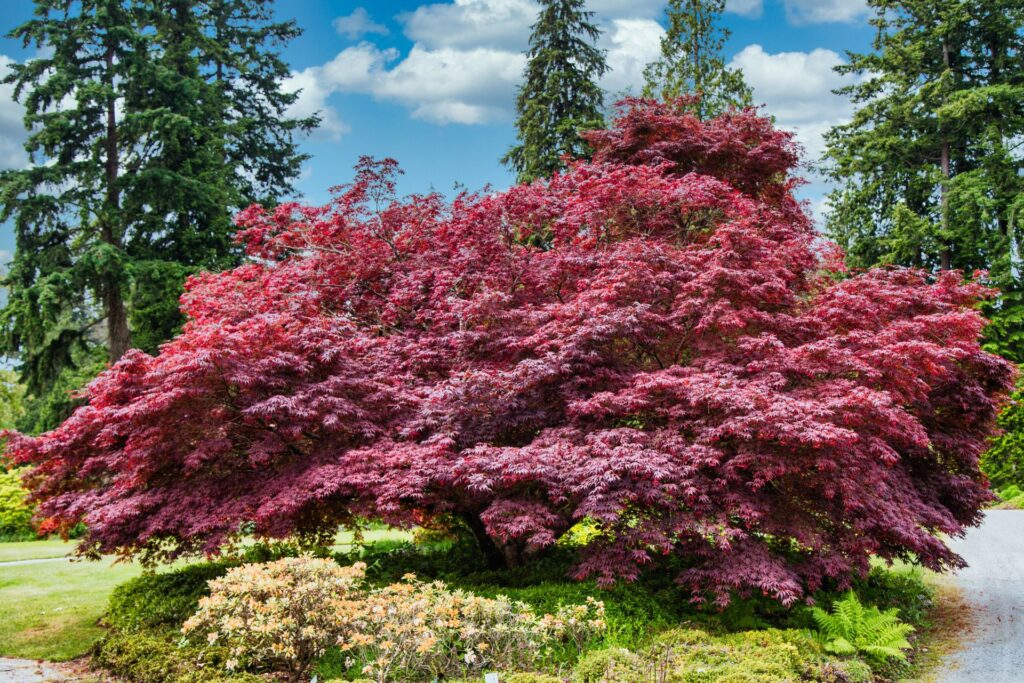
Top Trees For Small Gardens In New Zealand
When it comes to enhancing a small garden in New Zealand, choosing the right trees can make all the difference. Not only do they add structure and a sense of permanence to your landscape, but the right tree can bring a burst of color, offer shade, and even attract wildlife. This guide will walk you through some of the best trees, both native and exotic, that are perfectly suited to smaller garden spaces in New Zealand. We’ll explore their visual appeal, and growth habits, and provide some care tips to help you get the best out of these botanical beauties.
Pōhutukawa (Metrosideros excelsa)
Known as New Zealand’s Christmas tree, the Pōhutukawa is famed for its vibrant red blooms that appear in December. While traditional Pōhutukawa trees can grow quite large, varieties like ‘Maori Princess’ and ‘Tahiti’ are bred specifically for smaller spaces. These cultivars maintain a more compact form, making them ideal for small gardens without sacrificing the stunning floral display. Typically, these smaller varieties reach up to 3-4 meters in height and spread, and they thrive in well-drained soils with full sun exposure.
Kōwhai (Sophora microphylla)
The Kōwhai, with its brilliant yellow flowers, is an excellent choice for any garden, bringing a splash of color and attracting native birds like the tui and bellbird. This tree is naturally smaller, generally growing to about 5-6 meters tall. Kōwhai trees prefer sunny spots and well-drained soils but are quite hardy and can tolerate a range of soil types. Pruning after flowering can help maintain their shape and size, making them a versatile addition to the small garden.
Japanese Maple (Acer palmatum)
Japanese Maples are highly prized for their ornamental value, especially their stunning autumn foliage that turns vivid shades of red, orange, and gold. In New Zealand, certain varieties of Acer palmatum adapt well and can be a fantastic feature in a small garden. These trees typically grow to about 4-6 meters tall and are suited to cooler, sheltered locations with moist, well-drained soil. They do require some protection from harsh sun and winds, so positioning is key.
Crabapple (Malus spp.)
Crabapples are wonderful for their showy flowers in spring and their colorful, often edible fruits in autumn. Varieties that remain compact, such as ‘Sargentii’ which grows about 3 meters high, are perfect for small gardens. These trees are adaptable to most soils but perform best in fertile, well-drained conditions. Besides their aesthetic appeal, crabapples can also provide food for wildlife during the colder months.
Silver Birch (Betula pendula)
For those who love a touch of elegance, the Silver Birch is a great choice. Dwarf varieties like ‘Youngii’ grow to about 4 meters tall, featuring graceful, drooping branches and a beautiful white bark. Silver Birches are relatively easy to care for, requiring minimal pruning and doing well in a variety of soil types, though they prefer a slightly moist, well-drained environment.
Care Tips for Your Trees
Caring for these trees involves regular watering during their growing season, especially for the first few years and during dry spells. Mulching can help retain soil moisture and protect their roots. It’s also important to consider fertilizing in the spring to encourage healthy growth. Pruning should be done with care, aiming to maintain shape and remove any dead or diseased wood.
Incorporating these trees into your small garden not only maximizes your space but also enhances the garden’s aesthetic and ecological value. Whether you choose the bold colors of the Pōhutukawa and Kōwhai or the subtle elegance of the Japanese Maple and Silver Birch, each tree offers something unique to your garden. With the right care, these trees can thrive and bring joy for years to come.
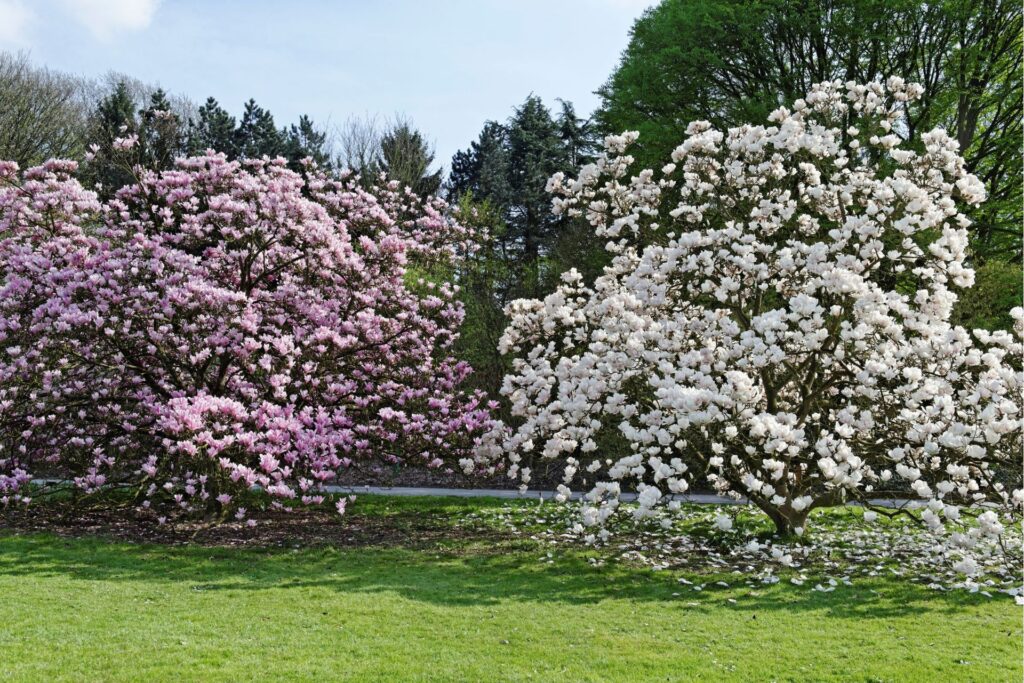
Planting And Caring For Your Trees
Planting trees is not only an investment in your property’s future but also a commitment to the environment. Here’s a comprehensive guide on how to plant and care for your trees effectively, ensuring they thrive for years to come.
Planting Tips for Trees
1. Best Times of the Year for Planting: Timing is crucial when it comes to tree planting. Generally, the best time to plant trees is during their dormant season, which falls in early spring before bud break or in late fall after leaf drop. This timing allows the trees to establish roots in their new location before the stress of summer heat or winter cold.
2. Soil Preparation: Before planting, it’s essential to prepare the soil properly to foster healthy growth. Start by testing the soil pH to ensure it matches the requirements of the tree species you plan to plant. Amend the soil based on the test results, incorporating organic matter like compost to improve soil structure, fertility, and drainage.
3. Initial Care: After planting, ensure the tree is well-supported; use stakes if necessary, especially in windy areas. Mulching around the base of the tree can help retain moisture, suppress weeds, and regulate soil temperature. However, keep the mulch a few inches away from the trunk to prevent rot.
Ongoing Care for Trees
1. Watering: Young trees need consistent watering to establish their roots. Water deeply rather than frequently, ensuring moisture reaches the deeper roots. After the first few years, trees typically require less water, depending on the species and climate, but during extended dry periods, even mature trees benefit from occasional deep watering.
2. Pruning: Regular pruning is crucial to maintain a tree’s health and aesthetic appeal. Prune during dormancy, typically in late winter. Remove any dead, damaged, or diseased branches to prevent potential hazards and encourage healthier growth. Additionally, thinning the crown can improve airflow and reduce disease incidence.
3. Disease Prevention: Keep an eye out for signs of disease or pest infestations. Early detection is key to managing tree health. Consult with a local arborist or extension office to correctly diagnose and treat any issues. Preventative care, such as choosing disease-resistant tree species and ensuring proper spacing and nutrition, can significantly reduce disease risks.
4. Other Maintenance Tips: As trees mature, inspect them annually for signs of structural weakness or potential hazards, especially trees located near buildings or walkways. Consider professional assessments for large or valuable trees to ensure their health and safety.
Properly planting and caring for trees is a rewarding endeavor that enhances your landscape and benefits the environment. By following these guidelines, you ensure that your trees get the best possible start and continue to prosper throughout their lives. Whether you are a novice gardener or an experienced arborist, these tips will help you cultivate a healthy, lush garden that can withstand the challenges of each season.
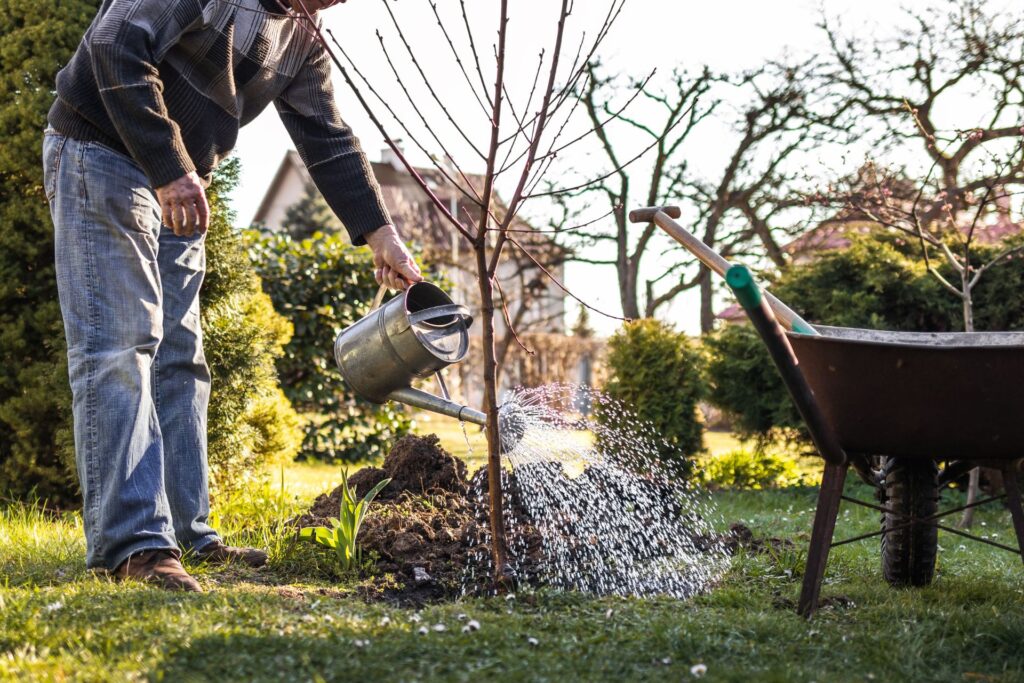
Design Tips For Incorporating Trees Into Small Gardens
Creating a serene and beautiful garden within a small space can be a delightful challenge. Incorporating trees not only brings structure and vertical interest but can also enhance the overall aesthetics and functionality of your garden. Here are some practical design tips for positioning trees and utilizing companion planting to transform your small garden into a lush, peaceful retreat.
Positioning Trees for Maximum Impact
1. Utilize Trees as Focal Points
In a small garden, every element counts, and a well-placed tree can serve as a stunning focal point. Consider a tree with distinctive features, such as interesting bark, striking foliage, or vibrant flowers. Place the tree where it can be viewed from key vantage points such as a patio, window, or doorway to draw the eye and anchor the garden’s design.
2. Use Trees for Privacy and Screening
Trees can be excellent natural privacy screens, shielding your garden from neighbors or street views. Tall, narrow varieties, like columnar evergreens or some species of birch and cypress, can provide privacy without taking up much ground space. Position these strategically along the edges of the garden where they can block unsightly views while also adding greenery and texture.
3. Consider the Play of Light and Shadow
The placement of trees can dramatically affect the lighting in your garden. Use trees to create dappled shade on seating areas or to prevent harsh sunlight from overwhelming smaller plants. Trees with open, airy canopies allow light to filter through gently, while denser trees can offer a cooler, shaded retreat.
Maximizing Garden Space Through Companion Planting
1. Companion Planting Under Trees
The area under and around trees can be perfect for companion planting, which helps maximize garden space. Choose shade-tolerant plants that can thrive under the canopy of your tree. For example, hostas, ferns, and hellebores are excellent companions for underplanting as they require similar moisture and light conditions as many tree species.
2. Enhance Soil and Microclimate
Companion planting can also improve the soil and microclimate around trees. Certain plants like legumes can fix nitrogen in the soil, which can benefit nutrient-hungry trees. Moreover, grouping plants can help retain moisture in the soil, reducing the need for frequent watering and maintenance.
3. Aesthetic Combinations
Select plants that complement the color and texture of your tree’s foliage. If your tree has silver leaves, consider underplanting with flowers that have purple tones to create a visually appealing contrast. Similarly, a tree with fine, delicate leaves might pair well with ground covers that have larger, bolder leaves.
Integrating trees into a small garden does more than just beautify the space—it can also create privacy, enhance the use of light, and improve the ecological dynamics of your garden area. With thoughtful placement and strategic companion planting, even the smallest garden can feel like a spacious, tranquil haven. Remember, the key to a successful small garden design is to view each component as part of a cohesive whole where each element complements and enhances the others.
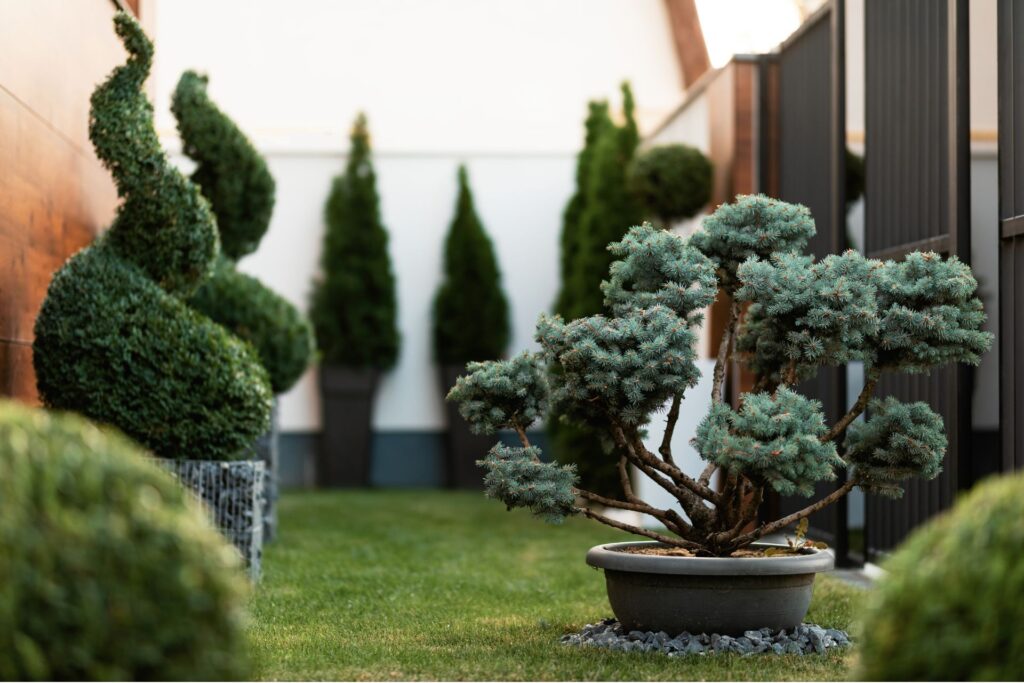
Common Mistakes To Avoid
Planting trees in small spaces, such as private gardens or urban environments, offers numerous benefits, including improved air quality, enhanced aesthetics, and increased property value. However, this endeavor comes with its own set of challenges. Making informed decisions is crucial to avoid common mistakes that can lead to long-term issues for both the tree and the homeowner. This detailed guide explores frequent errors made when selecting and planting trees in confined areas, providing actionable tips to ensure healthy growth and integration into your landscape.
1. Underestimating Tree Growth
One of the most significant mistakes is underestimating the potential size of a tree at maturity. Many homeowners choose saplings based on their immediate appearance without considering their growth potential over the years. This oversight can lead to overcrowding, competition for resources, and structural damage as the tree expands.
Tip: Always research the mature height and spread of a tree before planting. Consider how the full-grown tree will fit into your space, not just how it looks as a sapling. Choose species known for their manageable size and suitability for small areas, such as dwarf or columnar varieties.
2. Improper Placement Relative to Home Foundations
Another common error is planting trees too close to home foundations, driveways, or walkways. Trees planted too near to structures can cause significant issues as their roots grow outward and downward. This growth can disrupt foundations, interfere with underground utilities, and damage paved surfaces.
Tip: As a rule of thumb, trees should be planted at least as far away from a structure as their anticipated mature height. This spacing helps prevent roots from impacting foundations and ensures that branches won’t pose hazards to buildings or overhead lines. Additionally, be aware of the tree’s root behavior; some species have more invasive roots than others.
3. Choosing the Wrong Species for the Environment
Selecting a tree species without considering the specific environmental conditions and climate of your area can lead to poor growth, increased susceptibility to disease, and premature death of the tree.
Tip: Select trees that are well-suited to your local climate, soil type, and sunlight availability. Local nurseries or agricultural extension services can provide valuable guidance on the best species for your area. Opt for native species whenever possible, as they are more likely to thrive and provide benefits for local wildlife.
4. Neglecting Proper Planting Techniques
Improper planting techniques can also jeopardize the health and stability of trees. Planting too deep, for example, can lead to root rot and oxygen deprivation, while planting too shallow can expose roots to harsh environmental conditions.
Tip: Ensure that the planting hole is twice as wide as the root ball but only as deep as the root ball’s height. This dimension allows roots to expand easily without suffocating. The top of the root ball should be level with or slightly above ground level to accommodate natural settling.
By avoiding these common pitfalls, homeowners can greatly enhance the success of their tree-planting projects in small spaces. Educated choices about tree selection and planting strategies not only contribute to the longevity and health of the tree but also prevent structural issues and maintenance problems, ensuring a harmonious and sustainable addition to your landscape.
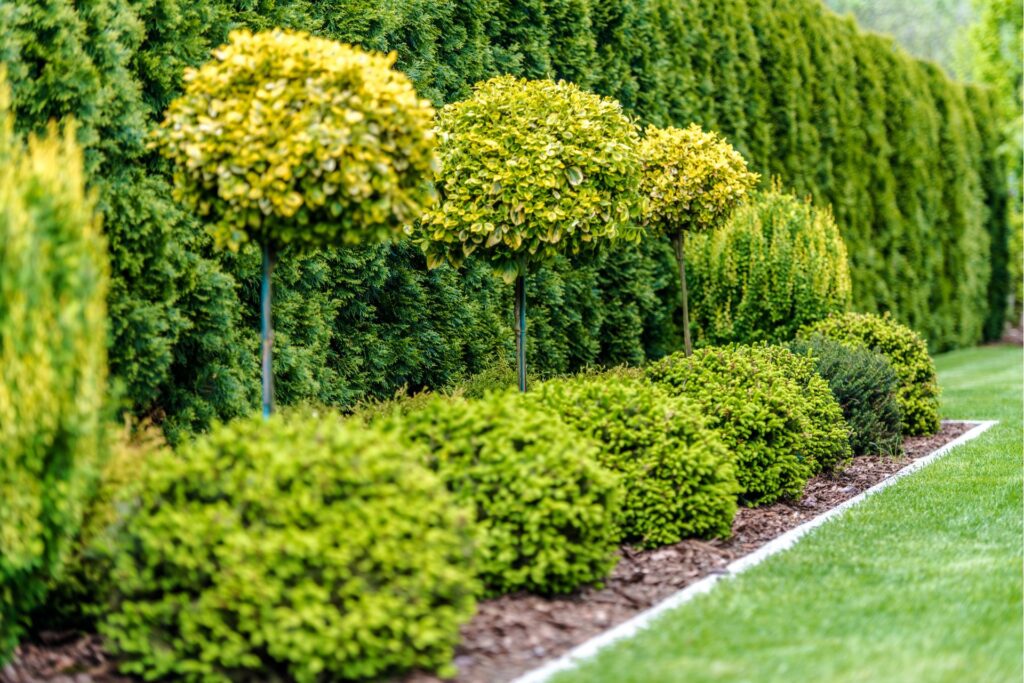
FAQs: About Best Trees For Small Gardens In New Zealand
Conclusion
Selecting the ideal trees for small gardens significantly enhances your outdoor living space by maximizing limited space, improving aesthetics, providing environmental benefits, and potentially increasing property value. Trees create a sense of depth and serve as focal points without overwhelming compact areas, while their diverse textures and seasonal changes offer continual visual interest. Gardening is an evolving art that benefits from experimentation with different species and continual learning about care techniques. Engaging with the community and staying informed through workshops, gardening clubs, and digital content can enrich your understanding and adaptability. By carefully choosing the right trees and embracing ongoing learning and adjustments, your small garden will remain a vibrant, evolving oasis that enhances both your home and quality of life.
About the Author:
Mike Veail is a recognized digital marketing expert with over 6 years of experience in helping tradespeople and small businesses thrive online. A former quantity surveyor, Mike combines deep industry knowledge with hands-on expertise in SEO and Google Ads. His marketing strategies are tailored to the specific needs of the trades sector, helping businesses increase visibility and generate more leads through proven, ethical methods.
Mike has successfully partnered with numerous companies, establishing a track record of delivering measurable results. His work has been featured across various platforms that showcase his expertise in lead generation and online marketing for the trades sector.
Learn more about Mike's experience and services at https://theleadguy.online or follow him on social media:

